
Corsair offers a wide range of fans, mostly from the higher price segment. If you are looking for the brand’s cheapest models, you will end up with the Corsair SP120 Elite, which is tested here. Everything that is not absolutely necessary is omitted here. So there is no RGB lighting, no special controls, just a fan. And in the Corsair SP120 Elite test, we analyze what this fan is capable of.
Specifications
| Size | 120 x 120 x 25 mm |
| Construction | Static pressure |
| Speed | 300 – 1300 RPM |
| max. airflow | 45.4 CFM / 77.14 m³/h |
| max. static pressure | 1.23 mm H2O |
| Connection | 4-pin PWM |
| Warranty period | 2 years warranty |
| Price | € 13.81 * |


Packaging and scope of delivery
- Brown, unpadded box
- Obligatory fan screws are the only accessories
While the packaging of most Corsair products appears in the characteristic black and yellow, the packaging of the SP120 Elite looks rather reduced. The box is compact, completely unpadded and kept in the plain brown tone of simple cardboard packaging. However, it is sufficiently printed with information.
Unsurprisingly, the scope of delivery is also modest. Apart from the fan, there is only a pack of case screws in the box.
Design
- Unobtrusive black design
- Large, flat fan blades indicate pressure-optimized design
The appearance of the Corsair SP120 Elite is understated and simple. These fans are simply matt black and the Corsair logo is stuck to the front, while the back is printed with the usual rough key data and labels. Overall, these 120 mm fans look unspectacular and inconspicuous. If you prefer something a little more eye-catching, the Corsair iCue SP120 RGB Elite also has an illuminated sister model, for which you have to pay a little more.
The seven fan blades of the Corsair SP120 Elite are quite large and wide, which indicates its design as a fan for static pressure. And this is also reflected in the name, as the SP stands for Static Pressure.
The rear of the frame is not equipped with the usual four bars to the fan motor, but nine curved fins are distributed here. Their curvature is designed to compensate for air turbulence and thus direct the airflow straight and powerfully to the rear. A similar concept can also be found on the rear of the Noctua NF-F12, another powerful fan.
Processing quality
- Build quality is more reminiscent of the entry-level class
- Very inconspicuous, but cleanly finished edges
In terms of workmanship, the Corsair SP120 Elite is just as inconspicuous as its design. The frame is not too thick and therefore not overly torsion-resistant. There are no rubberized contact surfaces in the corners – so if there are vibrations, they are not particularly dampened. Otherwise, nothing particularly positive or negative stands out. It is simply a fan with a favorable build quality without any major flaws.
The edges of the Corsair SP120 Elite are quite neatly finished and the fan blades are thin and quite easy to bend, but also have clean edges without burrs. For this very simple finish, the price does seem a little high.
With the XPF120X.B.PWM, Xilence offers an all-round more solid-looking finish at a lower price. Arctic’s F12 PWM PST is also significantly cheaper with a comparable build quality. The be quiet! Pure Wings 3 and the Noctua NF-P12 redux-1700 are similar in price, with the fan blades appearing more robust and the frame being more torsion-resistant.
Performance and volume
- Comparison against three competitor fans
- Explanation of the test setups
For the performance comparison, in addition to the Corsair SP120 Elite, I throw a few of the fans already mentioned into the room – the Noctua NF-P12 redux-1700 are similarly designed pressure-optimized fans from a similar price range. These are joined by the Xilence XPF120.B.PWM as competitively processed rival fans in a lower price range. Last but not least, I include the Arctic P12* in the comparison, which are slightly cheaper and also generate a decent amount of pressure.
Three scenarios are tested in each case: As a case fan, on a water cooling radiator and on an air cooler. The case is the DeepCool CH510 Mesh Digital (one fan at the bottom front and one at the back), the radiator belongs to an Arctic Liquid Freezer II 240 (two fans, installed in a mesh case front) and the air cooler is a DeepCool AK400 (one fan).
Three tests are carried out in each case. The first is at a standardized speed of 1100 RPM. This is often a range in which good performance and an acceptable noise level come together and therefore represents a good starting value for the fan setting. Secondly, the fans are set so that they are at the audible limit, which allows quiet fans to rotate faster, while louder fans have to be throttled back. This is the most comfortable setting for a quiet system in everyday use. The last test runs the fans at maximum performance. This can become quite unpleasantly loud and is rather irrelevant in everyday use and is only useful for systems with remote access, such as servers. Or – within limits – for gamers with headphones.
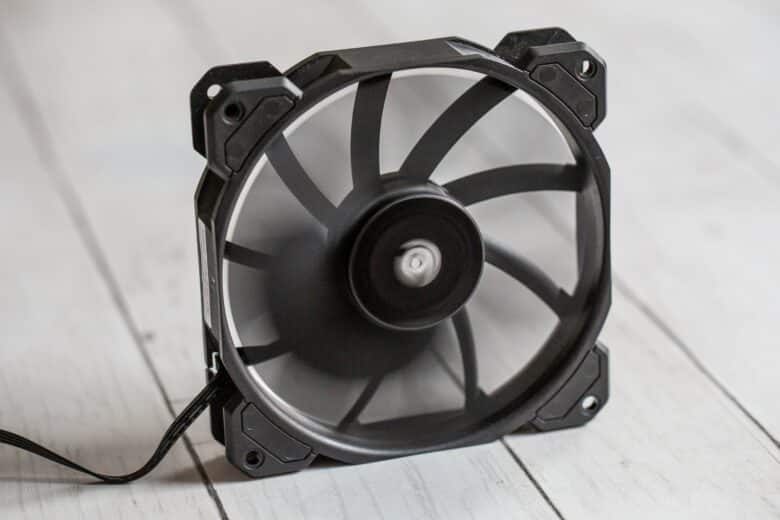
Comment on the latter: Here, the Corsair is limited to only 1300 RPM, which is significantly lower than the other fans. Although this has a negative effect on the maximum achievable performance, the fans don’t get too loud, even with automatic settings, but always remain within a tolerable range that you would want to use in everyday life.
Corsair SP120 Elite test as a case fan
- Rather moderately good case fan in Airflow cases
- In cases with a poorer airflow it should be more of an advantage
A side note: The case used in the Corsair SP120 Elite test is an airflow case. As soon as more restrictive cases are used, fans with a high static pressure are more likely to have an advantage than in this test. However, since all comparison fans are designed for a solid static pressure, the comparison field remains fair.
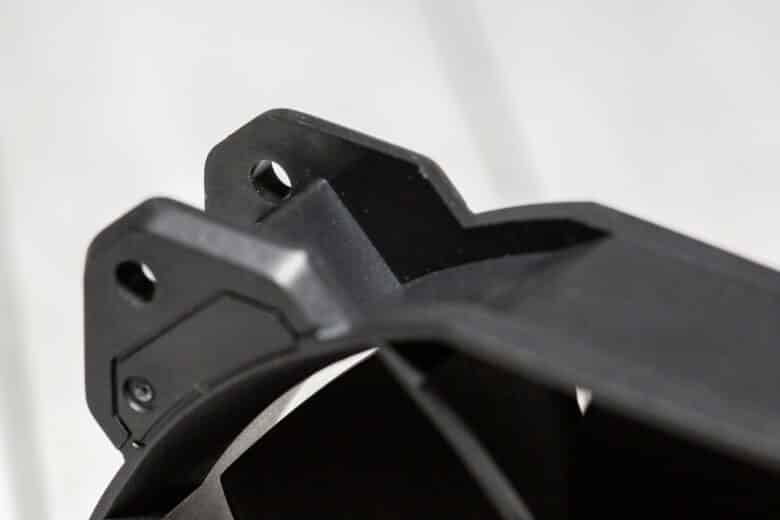
As a case fan, the Arctic P12 offers the best ratio of performance and noise at 1100 RPM. In terms of pure performance, the Corsair SP120 Elite, the Noctua NF-P12 redux-1700 PWM and the Xilence XPF120.B.PWM were actually on a similar level, but were all noticeably louder and clearly perceptible. The problem with pressure-optimized fans.
If you standardize the volume and operate all fans particularly quietly, the Arctic P12 does not have to be turned down and thus remains at the top, while the other three are noticeably lagging behind, but perform almost identically within the measurement tolerance.
If all fans are run at maximum performance, the Noctua fan comes out on top, followed by the Arctic P12 and the Xilence fan. The Corsair SP120 Elite brings up the rear in terms of performance in this test. However, with its low speed, it achieves pretty much the same noise level as the Arctic P12. The fans from Noctua and Xilence are significantly louder in this comparison.
As a case fan, the Corsair SP120 is therefore rather less impressive. In this test, the Arctic P12, which is actually even cheaper, clearly outperforms it in every test scenario.
Use on an air cooler
- Performance is okay, but not impressive
- Hardly recommended as a removable fan for air coolers
Here we come to an area where you are more likely to have to deal with resistance from cooling fins, so pressure optimization can play a greater role.

At 1100 RPM, the Xilence XPF120.B.PWM jumps to the top of the performance rankings. The Corsair SP120 Elite beats the Noctua NF-P12 both in terms of performance and noise – albeit only just. The Arctic P12 is particularly quiet, but 1100 RPM is too slow for it on a heatsink, so it is noticeably lagging behind.
However, if you adjust the fan speed to the audible limit, the Arctic fan can still be accelerated to around 1400 RPM, while the other fans have to be turned down a little. The Xilence XPF120.B.PWM still takes second place, while the Corsair SP120 Elite at least beats the Noctua fan, but is rather unimpressive itself.
Interestingly, the field mixes again at maximum performance and the Corsair SP120 Elite is largely on a par with the Arctic P12, despite the noticeably lower speed. However, the fans from Noctua and especially Xilence clearly set themselves apart – and are also noticeably louder.
Corsair SP120 Elite test as radiator fan
- Decent performance on the radiator
- Better than the Noctua NF-P12 redux-1700
- Always remains relatively quiet, but has a limited maximum performance
Radiators are ultimately the prime example of what pressure-optimized fans are best used for. Accordingly, the Corsair SP120 Elite immediately takes the lead among the comparison fans in this test at 1100 RPM, closely followed by the louder Xilence XPF120.B.PWM. The Noctua follows and in last place is the Arctic P12, which is the quietest, but the 1100 RPM is not enough to deliver the performance.

If you now set the fans to a uniformly low noise level, which is the strength of the Arctic P12, it fights its way back just ahead of the Corsair SP120 Elite due to its higher speed. However, the latter takes second place – performing almost identically within the measurement tolerance. The Xilence XPF120.B.PWM performs noticeably worse and the Noctua NF-P12 redux-1700 PWM is even further behind. In short: The Corsair SP120 Elite is quite good for quiet, solid performance on the radiator.
At full power, the Corsair fan again suffers from its low maximum speed. The fans from Arctic, Noctua and Xilence are roughly on a par here, with the Arctic P12 being the quietest. The Corsair SP120 Elite is actually a little quieter because it rotates much more slowly, but it is also weaker. Nevertheless, it delivers a solid performance on the radiator – especially in the low volume range.
Conclusion
The Corsair SP120 Elite is in a not so pleasant midfield. Where the build quality is more reminiscent of the cheapest price range, the performance is perfectly fine and even the popular Noctua NF-P12 redux-1700 PWM is beaten if you need good static pressure as quietly as possible. However, impressive is different and there are fans in every sector that are more suitable and often cheaper. As a case fan, the Arctic P12 PWM transports noticeably more air into the case. On the air cooler, the Xilence XPF120.B.PWM looks higher quality, is more powerful, offers more top performance and is also a little cheaper.
Only on radiators can the Corsair SP120 Elite really convince and even here it is not a self-runner in its price range. Especially as it will have problems delivering additional performance as a replacement fan for AIOs. And those who invest in custom water cooling systems will have enough money to be able to rely on even more effective fans here too.
In short, the Corsair SP120 Elite is perfectly fine and I wouldn’t advise anyone who owns it to change. But it is not so convincing in any area that you can’t get more performance for your money with other fans.
Corsair SP120 Elite
Workmanship
Noise level
Performance
Features
Value for money
72/100
The Corsair SP120 Elite are quite good fans for use on radiators. However, there are fans with similar performance, workmanship and features for less money.






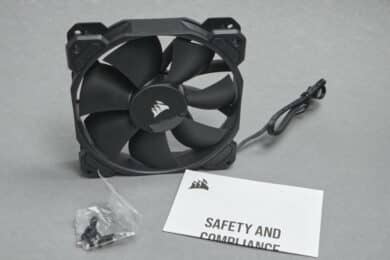
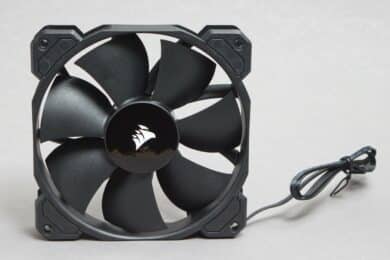
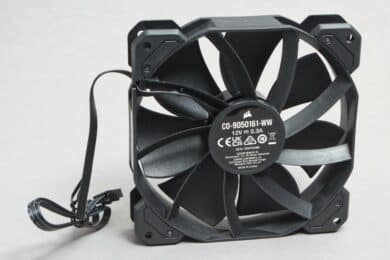

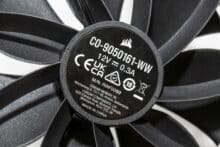

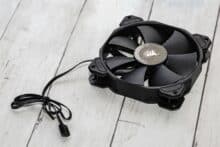
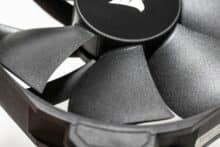
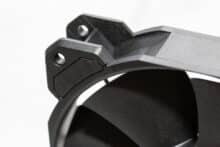

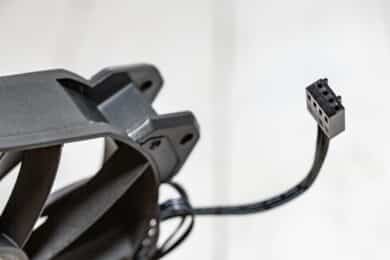
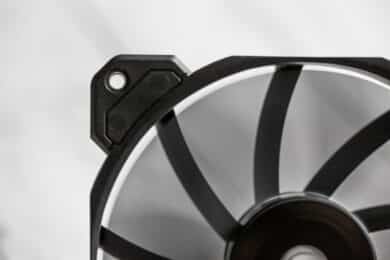
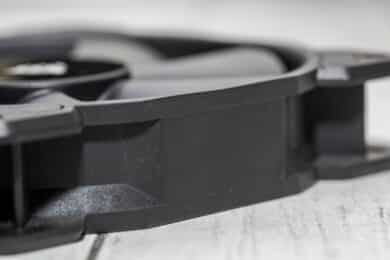
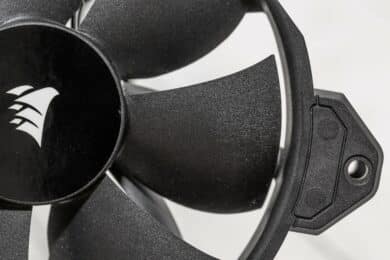
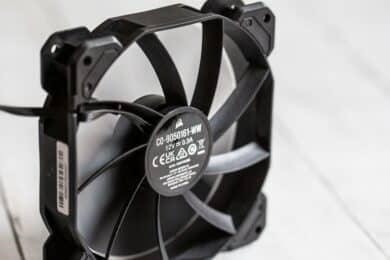
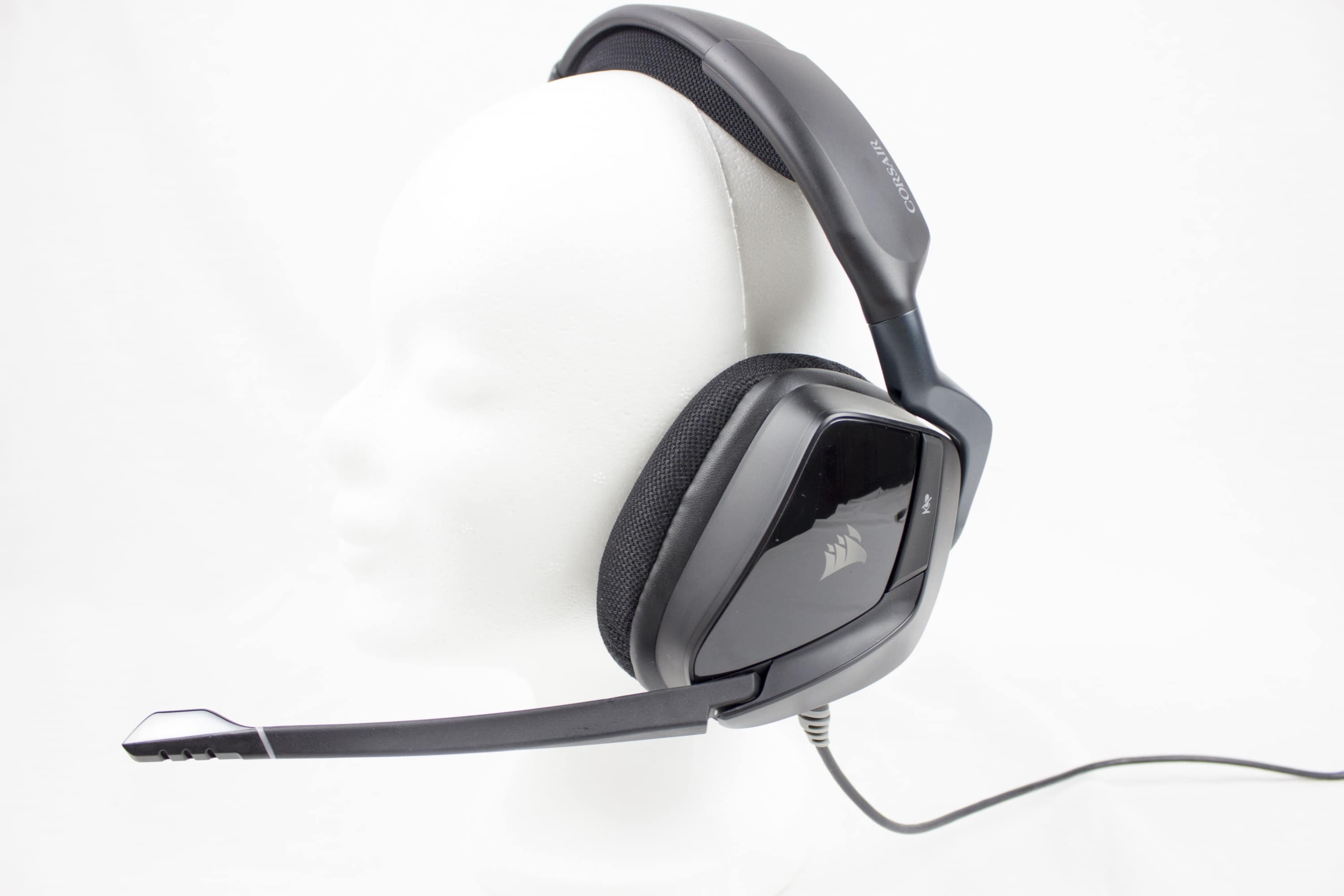
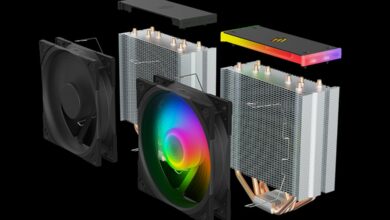
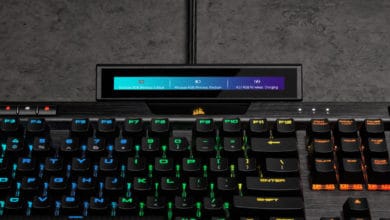
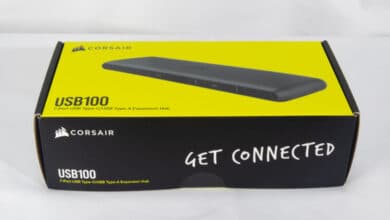
No replies yet
Neue Antworten laden...
Gehört zum Inventar
Beteilige dich an der Diskussion in der Basic Tutorials Community →